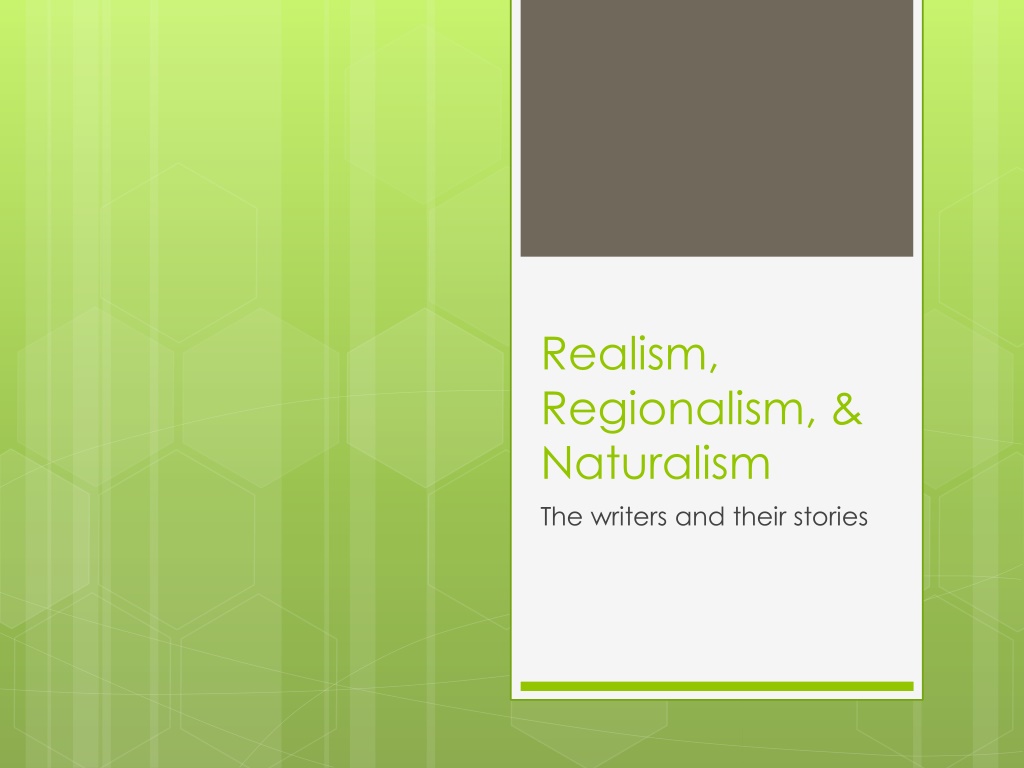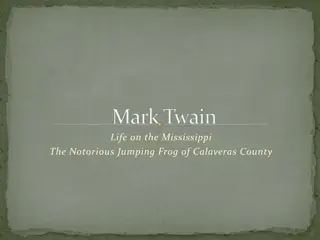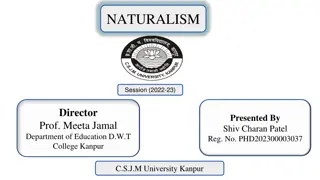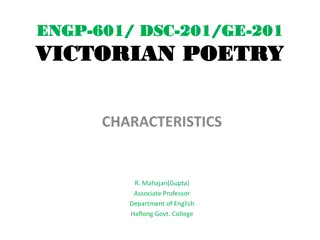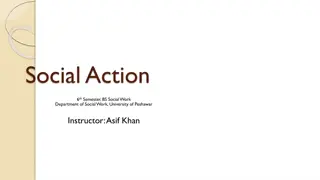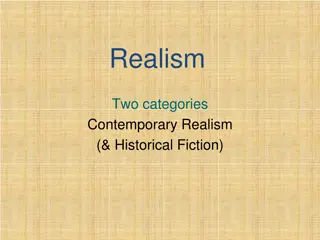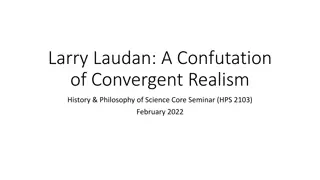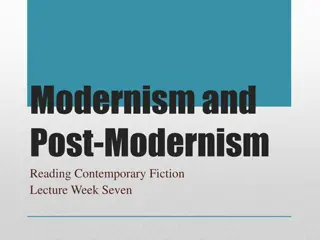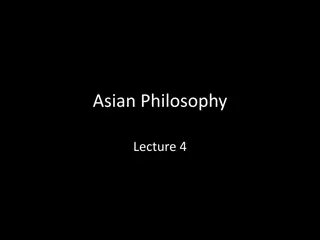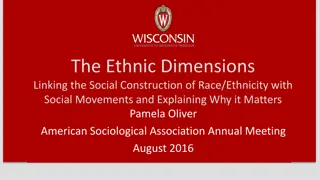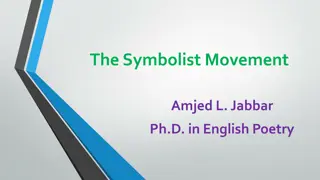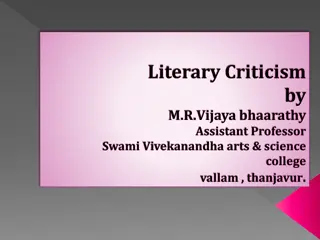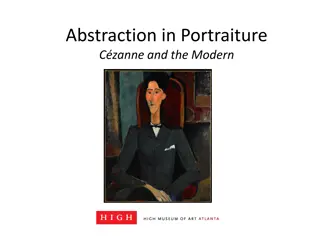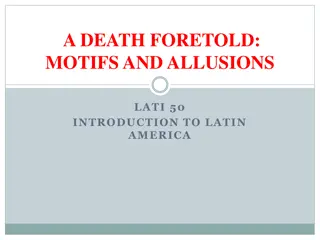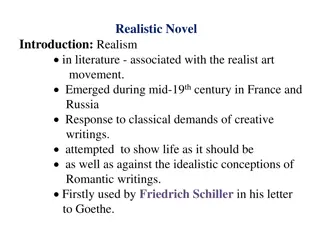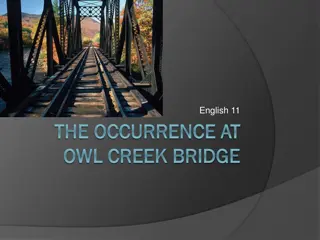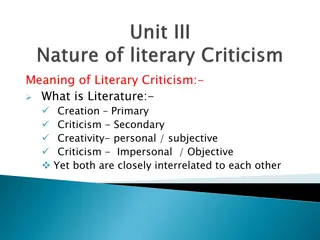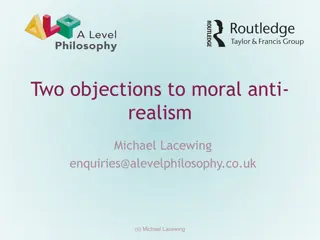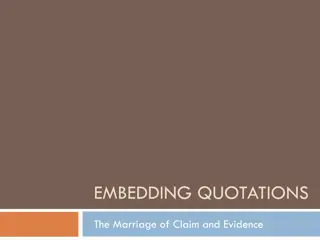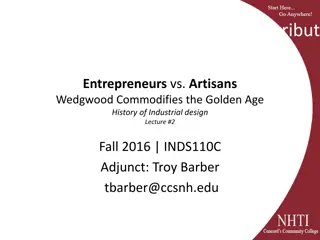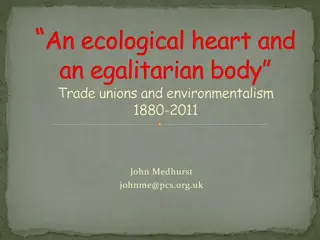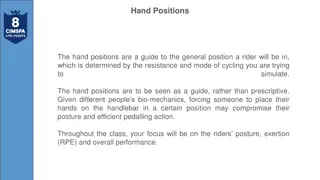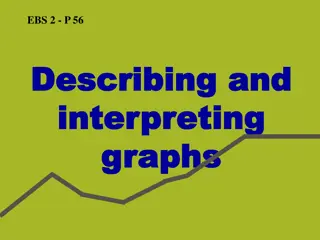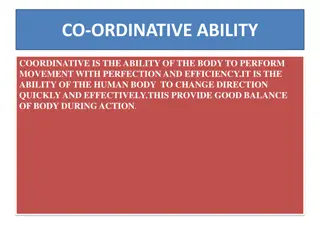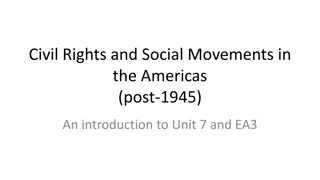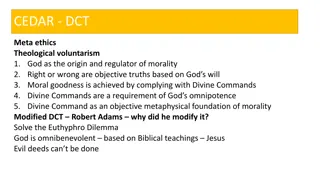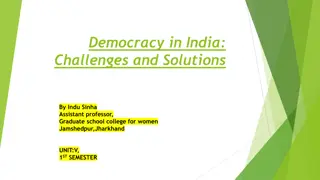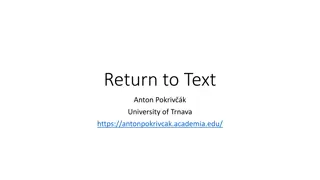Realism, Regionalism, and Naturalism: Exploring Literary Movements
Defining the literary period of Realism, which portrays life without romantic idealism, focusing on ordinary characters. Regionalism emerges from Realism, depicting specific geographic areas and cultural elements. Naturalism, akin to Realism, studies human beings scientifically and views them as products of heredity and environment, often in conflict with nature or society.
Download Presentation

Please find below an Image/Link to download the presentation.
The content on the website is provided AS IS for your information and personal use only. It may not be sold, licensed, or shared on other websites without obtaining consent from the author. Download presentation by click this link. If you encounter any issues during the download, it is possible that the publisher has removed the file from their server.
E N D
Presentation Transcript
Realism, Regionalism, & Naturalism The writers and their stories
Defining the Literary Period Realism: attempts to portray life as it is, without romantic idealism. Characters are ordinary people in ordinary situations Focused on lower and middle class characters Trials, hardships, and ultimate nobility of the common man Characters written about in an objective and honest way No sentimentality or idealism of Romantic Period Settings are developed in detail to re-create time and place for the reader There are two sub-groups that occur during the period of Realism Regionalism and Naturalism
Regionalism Natural outgrowth of Realism Accurately represents the speech, manners, habits, history, folklore, and beliefs of a people in a specific geographic area Factors that contributed to Regionalism? Publishing boom of late 1880s, especially in magazines and subscription publishing Targeted rural, middle class Readers wanted characters who sounded and behaved liked them
Importance of Setting to Regionalism Key elements of Setting Geographical location and physical features The history of the time period in which the story is set The jobs and daily activities of the characters The culture of the characters, including Religious beliefs Moral beliefs Socio-economic conditions Dialect: distinctive forms of language spoken in particular areas
Naturalism Naturalism: like realism, wanted to portray life as it actually was Applied scientific principles of objectivity and detachment to the study of human beings. Viewed people as helpless victims of natural laws (hereditary, environment) Man s fate is governed by heredity and environment. Often depict man in conflict with nature, society, or himself.
Characteristics of Naturalism Makes people the subjects of scientific case studies. Tone is often coldly scientific. Uses great masses of details; their informal arrangement reflects the chaotic state of society and nature. In diction, sometimes seems to seek out the ugly word for its own sake. Likely to present nature as chaotic. Studies society dispassionately to correct the evils found there. Drops artificial concepts of plot and action for a "slice of life. Main characters are usually low on the social scale; often morally frail
Ambrose Bierce Author background Enlisted in Union army at 18 Fought in several major battles of Civil War After Civil War, moved west to San Fran Started journalism career Style and Theme Style: Known for cynical (bitter) humor and cruel wit Theme: Futility (pointlessness or uselessness) of war
Occurrence at Owl Creek Bridge Literary Elements Point of view: the narrative perspective from which a story is told 1stperson: the narrator is a character in the story and describes events using I, me, we, my 3rdperson: events are related by a voice outside the action, using words like he, she, they 3rdperson Omniscient: aware of all characters thoughts 3rdperson Limited: focuses only on one character s thoughts Stream of Consciousness: character s thoughts are presented as the mind experiences them, without obvious logic
Occurrence at Owl Creek Bridge Structure This short story is arranged in three numbered sections Change of section indicates a change in time Section I: at the execution Section II: flashback Section III: picks up where Section I left off Each section contains a shift in POV pay attention as you read to where POV shifts.
Occurrence at Owl Creek Bridge Tablework: Foreshadowing and POV Looking specifically at Section III Find and explain three examples of foreshadowing from Part III that help to indicate the Peyton s escape is only in his mind. Looking at section III, determine what the POV the section is at the beginning of the section. Then, figure out When POV changes quote a line from the story (for part III) How does the POV affect the level of suspense? Explain why this POV is essential to the story s overall impact Finally, consider and answer this: How is the non chronological structure of the story important to its overall power and effect on the reader?
Stephen Crane (1871-1900) Grew up in the slums of Asbury Park, NJ Attended college at Syracuse never graduated Became a journalist after leaving college First book, Maggie: A Girl of the streets Censored because of the content the life of a prostitute in the slums Becomes a literary sensation with second novel, The Red Badge of Courage Exposed American readers to the brutality of war
An Episode of War Literary Focus--Naturalism Subjects: common people in ordinary life situations Focus: emphasized how instinct and environment affect human behavior Influenced by Darwin s Theory of Evolution and Natural Selection Believed human fate is determined by forces beyond individual control, but that force isn t God; it s nature or social forces that determine our fate Presents a bleak reality without explanation, letting the reader draw her own conclusions
An Episode of War Literary Focus Setting--As you read, focus on the details that Crane includes to describe the setting that allow you to visualize the characters, settings and events.
An Episode of War Naturalist writers strove to show people as hapless victims of circumstances beyond their control; these forces include hereditary, environment (nature), and sheer chance. Characters are often victims of their own (bad) instincts or of a violent world Characters endure suffering quietly, with honor
An Episode of War Discuss as a table (answer in your notes) How is the lieutenant a victim of chance? Why does Crane leave the lieutenant nameless? Tablework...in your notes. Identify three descriptions of human actions in the story that could also describe the actions of animals. After he is shot, several of the men attempt acts of kindness toward the lieutenant. Identify one gesture of kindness shown to the lieutenant and explain why it fails. Naturalism focused on the dignified suffering of people who face forces they can t control. Identify two examples of the lieutenant s dignified suffering.
Slave Narratives and Spirituals One of the most popular genres of literature during 19th century Read widely prior to Civil War to build support for the abolition of slavery Records experiences in life as a slave Records master/slave relationship Records resistance to slavery Earliest form of African American Literary tradition, usually detailing individual quest for freedom and personal identity Audience? Slave narratives were written with a white audience in mind why? THE PURPOSE OF ALL SLAVE NARRATIVES WAS TO PERSUADE THE READER THAT SLAVERY WAS AN EVIL INSTITUTION AND SHOULD BE ABOLISHED
Frederick Douglass From My Bondage, My Freedom born into slavery in Maryland Separated from mother soon after birth With the help of his owner, taught himself to read Ran away to freedom at 21 using pass he forged Became involved in abolitionist movement in Massachusetts changed last name from Bailey (owner s name) to Douglass 1845: published his autobiography and moved to England because of fugitive slave laws Friends raised $700 to purchase his freedom Founded The North Star first Black owned anti-slavery newspaper in US Worked on UGRR and recruited slaves for the Union Army
African American Spirituals and Folklore Origins can be traced back to West African literary and cultural traditions Storytelling and songs Became a combination of plantation life and memories/customs from Africa Songs were used by slaves to Educate the mind Enlighten the mind Free the soul Songs were used by slave owners to Keep slaves busy while working in fields so they could not plot escape or rebellion Irony many of the slave songs were coded messages of how to escape slavery
African American Spirituals and Folklore Slave Songs Communicated feelings of discontent, homelessness, and exile Love, joy, and hope Forms anthems, ballads, shouts, and jubilees Reflected different moods and circumstances Content Both social and religious Lots of Biblical allusions Folklore Themes Slaves outwitting their masters Slaves escaping (metaphorically or literally) from bondage
Jack London (1876-1916) Grew up EXTREMELY poor in San Francisco Began working full time as an unskilled laborer at age 11 Books were an escape from his life Inspired him to travel Graduated from high school; attended one semester of college before heading to Alaska to find gold Taught him about people s desire for wealth and power Our inability to control the forces of nature (naturalism) First literary success, The Call of the Wild (1903)
Jack London Literary Focus: Naturalism Conflict: the struggle between opposing forces Internal: occurs within the mind of a character External Man V. Society Man V. Man Man V. Nature Man V. Fate/God In To Build a Fire the setting serves as the opposing force
Jack London Literary Focus: Imagery and setting Table Work Analyzing imagery and setting for hints of foreshadowing Find three examples of imagery from the beginning of the story until it is noon (page 601) that hint the man may not survive this journey Find three examples of the dog s feelings and instincts about survival from anywhere in the story How do the dog s feeling and instincts increase the dramatic irony?
Kate Chopin (1851-1904) Raised in the Midwest (Missouri) Father died in RR accident when Chopin was 5 Well educated Widowed at 31 years old left to raise 6 children and manage her husband s business on her own First published in 1889 Stories often focused on women seeking independence from male dominated society
The Story of an Hour Literary Elements: Setting: turn of the century (1900) Custom and law limited women s actions and control over their own lives No right to vote Could not own property Educational and Employment opportunities severely limited Married women were expected to be subservient to and supportive of their husbands
The Story of an Hour Literary Elements: Irony Verbal Irony: occurs when someone says something that deliberately contradicts what that person actually means Situational irony: occurs when something happens that contradicts THE READER S expectations Dramatic Irony: occurs when the reader/audience knows something that the characters/actors do not know.
Table work: discuss and answer as a group How do Richards and Josephine expect Mrs. Mallard to react to the news? How do their expectations help to guide our expectations? In what ways is Mrs. Mallard s reaction to her husband s death an example of situational irony? How might the diagnosis of Mrs. Mallard s cause of death be an example of dramatic irony? How would you describe the Mallard s marriage? Is Mrs. Mallard justified in her reaction to the news? Does she hate her husband or the institution of marriage? Explain why the following descriptive passages are ironic and identify what type of irony they are. the tops of the trees were all aquiver with new spring life She was drinking the very elixir of life through the open window She breathed a quick prayer that life might be long. It was only yesterday that she had thought with a shudder that life might be long.
